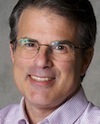
When you ride the Amtrak between Boston and Washington, as I frequently do, you see countless abandoned brick warehouses and factories. Long ago, those structures, with their private rail sidings and spurs, were profit centers. Now they sit vacant and worthless, canvases for graffiti artists or shelters for homeless tramps.
Observing those buildings from a seat on the Northeast Regional, I try to fathom the economics of urban renewal (or the lack of thereof).  With so many idle workers, and with so much idle money in the economy, why aren’t more of these relics of nineteenth-century industrialism either torn down… or fixed up?
With so many idle workers, and with so much idle money in the economy, why aren’t more of these relics of nineteenth-century industrialism either torn down… or fixed up?
The answer to that type of question eludes me. When I try to figure out where the capital or appropriations or grants or loans to pay for the demolition or restoration of these strangely beautiful brick-and-mortar ruins might come from—and how the money might eventually be repaid or regenerated—I just get confused.
They’re a slippery slope, these thoughts, and before I know it, I’m wondering about the national debt and the federal budget deficit. The debt is considered horrible, but Treasury bonds are in great demand. Is it because every debt an asset? And what about Social Security benefits for Boomers? How can they bankrupt the country if they add a dollar of demand to the economy for every dollar they remove in taxes?
Next week, I’ll meet economists who love this type of question. A passel of them will be at the 12th International Post-Keynesian Conference, to be held on the University of Missouri’s Kansas City campus. If you’ve ever read anything by so-called heterodox economists like L. Randall Wray, or Stephanie Kelton, James Galbraith (son of John Kenneth) or the late Hyman Minsky, you’ll know what I mean.
These folks practice a type of economics known as Modern Monetary Theory. MMT has sadly gotten much less respect than supply-side economics (which George W.H. Bush called “voodoo” economics), but I’ve found that its practitioners are the only ones who truly try to interpret the convoluted financial system we all live in. One of the conference panels is entitled, “Money and the Real World.”

You’ve probably never heard the heterodox ideas that the MMT crowd has written, spoken or inspired. That the private sector enjoys a surplus when the federal government runs a deficit; that Uncle Sam can no more run out of dollars than a scoreboard can run out of points; that when the Chinese buy Treasuries, it’s more like a bank deposit than a loan.
Our unmoored paper money system never made much sense to me until I discovered MMT. The very fact that these economists have been so marginalized convinces me that they must be on to something.
So it’s off to Kansas City, Mo., next week, and then on to Williamsburg, Va., for the Insured Retirement Institute conference on the following Monday. In future issues of RIJ, I’ll report on what I’ve learned at those meetings. The contrast between the portrayals of economic and political reality at the two conferences should be stark, and that’s exactly what I’m hoping for.
© 2014 RIJ Publishing LLC. All rights reserved.

